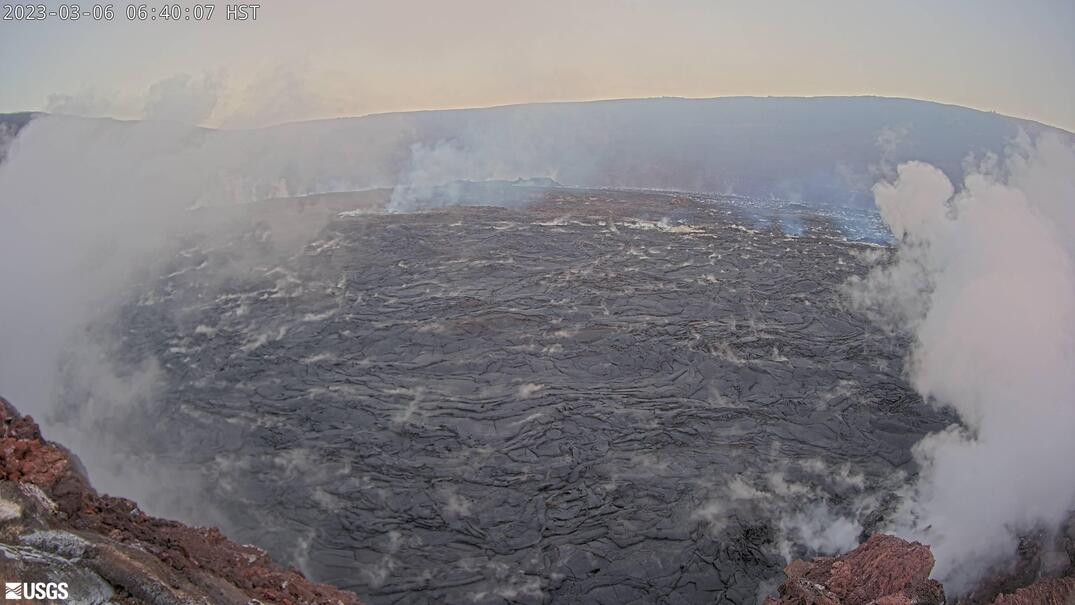(BIVN) – The summit eruption of Kīlauea Volcano continues, but at greatly reduced activity levels compared to several weeks ago, scientists say.
All eruptive activity within Halemaʻumaʻu crater has been confined to the crater, and no significant changes have been observed along the Kīlauea rift zones. The Current Volcano Alert Level is WATCH.
The Monday morning update from the USGS Hawaiian Volcano Observatory has the details:
Halemaʻumaʻu Lava Lake Observations: Eruption of lava on the Halemaʻumaʻu crater floor continues to be greatly diminished. The eastern and central vents that were active earlier in the eruption are not effusing any lava at this time. There is no longer a circulating lava lake in the western basin from the 2021–2022 eruption, since the lake’s footprint completely crusted over yesterday. The only apparent surface eruptive activity over the past day has been minor ooze-outs of lava onto the floor of this basin. The reduction in activity is related to a large deflationary tilt signal that began on February 17. A live-stream video of the western basin is available at youtube.com.
Summit Observations: Following a large deflationary tilt signal that began on February 17 and lasted until early February 19, summit tiltmeters have tracked several smaller deflation/inflation (DI) events. Over the course of these DI events there has been a slight increase in net tilt, but the summit remains deflated compared to the period leading up to February 17. More vigorous eruptive activity on the Halemaʻumaʻu crater floor may resume if the summit re-inflates to the prior level. Volcanic tremor has dropped slightly in recent weeks, but it remains above background level. A sulfur dioxide (SO2) emission rate of approximately 250 tonnes per day (t/d) was measured on February 28.
Rift Zone Observations: No unusual activity has been noted along the East Rift Zone or Southwest Rift Zone; steady rates of ground deformation and seismicity continue along both. Measurements from continuous gas monitoring stations downwind of Puʻuʻōʻō—the 1983–2018 eruptive vent—in the middle East Rift Zone have been below detection limits for SO2, indicating that SO2 emissions from Puʻuʻōʻō are negligible.
Hazard Analysis: This eruption at Kīlauea’s summit is occurring within a closed area of Hawaiʻi Volcanoes National Park. High levels of volcanic gas are the primary hazard of concern, as this hazard can have far-reaching effects downwind. Large amounts of volcanic gas—primarily water vapor (H2O), carbon dioxide (CO2), and sulfur dioxide (SO2)—are continuously released during eruptions of Kīlauea Volcano. As SO2 is released from the summit, it reacts in the atmosphere to create the visible haze known as vog (volcanic smog) that has been observed downwind of Kīlauea. Vog creates the potential for airborne health hazards to residents and visitors, damages agricultural crops and other plants, and affects livestock.


by Big Island Video News8:11 am
on at
STORY SUMMARY
HAWAIʻI VOLCANOES NATIONAL PARK - Surface eruptive activity over the past day has been limited to minor ooze-outs of lava onto the floor of the crater.